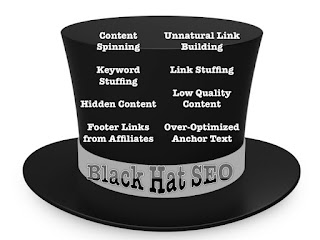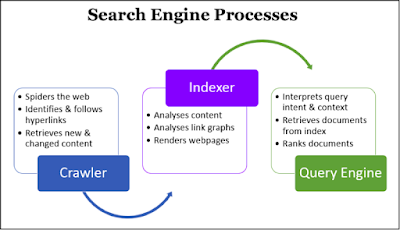Off Page SEO :
Friday 8 July 2016
Wednesday 6 July 2016
Online
Reputation Management (ORM) is the practice of crafting strategies
that shape or influence the public perception of an organization,
individual or other entity on the Internet. It helps drive public
opinion about a business and its products and services.
OR
Basically,
online reputation management is the process of controlling what shows
up when someone Googles your name. We'll show you how to promote
positive content to the top of your search results and push unwanted
content (negative, irrelevant or competition) farther down to ensure
that when someone Googles you, their results are populated with
positive, relevant content about you.
Controlling
Bad Publicity with Online Reputation Management
To
appreciate why Online Reputation Management is effective, you should
understand how negative press takes root within the top search
listings in the first place. Google, Yahoo, and Bing rank pages based
on a large number of criteria. If a website and its individual pages
satisfy the most important of those criteria, those pages will rank
well.
Some
of the Best Parasite Hosts for Online Reputation management Include:
Facebook
Foursquare
Google+
LinkedIn
Pinterest
Quora
Tumblr
Twitter
Yelp
YouTube
Parasite
hosting refers to websites with high trust and authority that allow
the self-publishing of content. The benefit lies in the ability to
leverage the host domain’s authority and trust to get your content
ranked.
Social
media optimization (SMO) is the process of increasing the awareness
of a product, brand or event by using a number of social media
outlets and communities to generate viral publicity.
When
used effectively social media can be one of your greatest assets for
improving your site’s organic search results. By connecting with
people in various online venues, you extend the reach of your
business and increase opportunities for people to link to your main
business page.
The
Fives Rules of SMO -
1.
Create Shareable Content - This
is fundamental to social media marketing, so in SMO it's about
determining the content that your audience prefers to share across
different social media platforms. In Rohit's original post, this
activity was about encouraging links: the two go together.
2.
Make Sharing Easy - This is the
embedding of buttons and other widgets to encourage sharing,
recommending or bookmarking within your site and blog. SMO analyses
the best placements, formats and messages to do this.
3.
Reward Engagement - It's
commonplace now to reward "Liking" or "Tweeting"
through a promotional or content offer, so this can look at the best
offers to do this. Rohit also says this should look at a longer-term
of encouraging deeper engagement and conversations.
4.
Proactively Share Content -
This covers the process and format for sharing beyond your central
hub. This can include syndicating articles to other partners or
platforms like Slideshare or Scribd. Some also create their own
widgets for embedding or sharing on other sites (atomization).
5.
Encourage The “Mashup”-
Rohit says that this is encouraging folks to take and remix your
content, so it becomes user generated content. This activity can
effectively be built into campaigns.
Monday 4 July 2016
SEO Techniques are Classified Into Two Broad Categories:
- White Hat SEO - Techniques that search engines recommend as part of a good design.
- Black Hat SEO - Techniques that search engines do not approve and attempt to minimize the effect of. These techniques are also known as spamdexing.
- Gray Hat SEO
White Hat SEO
An SEO tactic is considered as White Hat if it has the following features:
It conforms to the search engine's guidelines.
- It does not involve in any deception.
- It ensures that the content a search engine indexes, and subsequently ranks, is the same content a user will see.
- It ensures that a web page content should have been created for the users and not just for the search engines.
- It ensures good quality of the web pages.
- It ensures availability of useful content on the web pages.
Always follow a White Hat SEO tactic and do not try to fool your site visitors. Be honest and you will definitely get something more.
Black Hat or Spamdexing
An SEO tactic, is considered as Black Hat or Spamdexing if it has the following features:
- Attempting ranking improvements that are disapproved by the search engines and/or involve deception.
- Redirecting users from a page that is built for search engines to one that is more human friendly.
- Redirecting users to a page that was different from the page the search engine ranked.
- Serving one version of a page to search engine spiders/bots and another version to human visitors. This is called Cloaking SEO tactic.
- Using hidden or invisible text or with the page background color, using a tiny font size or hiding them within the HTML code such as "no frame" sections.
- Repeating keywords in the metatags, and using keywords that are unrelated to the website content. This is called metatag stuffing.
Grey
hat SEO
As
the color suggests, this type of SEO technique comes somewhere
between the Black and White type. So while considering different type
of SEO as well, this type comes between White and Black Hat types of
SEO. It uses techniques like three way link exchange, article
spinning, buying of old domains, buying expired domains and at last
Google Bombing also.
Search engines perform several activities in order to deliver search results.
Crawling - Process of fetching all the web pages linked to a website. This task is performed by a software, called a crawler or a spider (or Googlebot, in case of Google).
Indexing - Process of creating index for all the fetched web pages and keeping them into a giant database from where it can later be retrieved. Essentially, the process of indexing is identifying the words and expressions that best describe the page and assigning the page to particular keywords.
Processing - When a search request comes, the search engine processes it, i.e. it compares the search string in the search request with the indexed pages in the database.
Processing - When a search request comes, the search engine processes it, i.e. it compares the search string in the search request with the indexed pages in the database.
Calculating Relevancy - It is likely that more than one page contains the search string, so the search engine starts calculating the relevancy of each of the pages in its index to the search string.
Retrieving Results - The last step in search engine activities is retrieving the best matched results. Basically, it is nothing more than simply displaying them in the browser.
Sunday 3 July 2016
SEO stands for Search Engine Optimization. SEO is all about optimizing a website for search engines. SEO is a technique for:
- 1.designing and developing a website to rank well in search engine results.
- 2.Improving the volume and quality of traffic to a website from search engines.
- 3.Marketing by understanding how search algorithms work, and what human visitors might search.
-
SEO is a subset of search engine marketing. SEO is also referred as SEO copyrighting, because most of the techniques that are used to promote sites in search engines, deal with text.
Subscribe to:
Posts (Atom)
Total Pageviews
Powered by Blogger.













